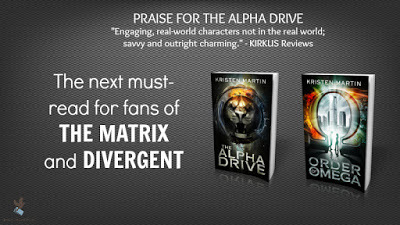How to Foreshadow
Today, I want to talk about a highly requested topic, and that is: how to use foreshadowing in your book. This is a topic that many writers struggle to wrap their heads around, so I wanted to do a deep-dive to hopefully provide some clarity and inspiration to use foreshadowing in your current WIP or a future project.
First and foremost, we need to understand what foreshadowing is. In its simplest form, foreshadowing prepares readers for what will happen later in the story. Notice I didn’t say that foreshadowing tells readers what will happen later in the story, it just prepares them.
So how can you prepare your readers? When foreshadowing is used effectively and in just the right dosage, it will create a cohesive and plausible story. This means that readers will still be surprised by said foreshadowed event, but won’t feel totally jarred when it happens. They should also feel that the event that just occurred is realistic and could actually happen based on the clues and hints (foreshadowing!) that you cleverly placed throughout the story. If your reader feels cheated, lied to, or tricked, then you didn’t foreshadow correctly. So how can we effectively use foreshadowing in our stories and leave our readers feeling satisfied? Let’s find out.
Foreshadowing can really be broken out into two parts: The tipoff and the payoff.
1. Let’s start with the tipoffa. This is the part where you hint to readers that something surprising and/or important is going to happen later in the book. Depending on what you’re foreshadowing, the tipoff can be blatant or subtle, but subtle is almost always better. You don’t want to give away your plot twists! At the same time, though, your hints have to be obvious enough that readers will remember them later on. For example, if your antagonist is going to kidnap your protagonist’s son, the tipoff might be when your protagonist notices a creeper hanging around the playground.b. The trick to good foreshadowing is preparing your readers on a subconscious level for what’s coming without allowing them to guess the exact details of your plot twist. You don’t want your hints to be so obvious that they remove all suspense.c. Usually, the earlier you can foreshadow an event, the stronger and more cohesive an effect you will create. The bigger the event, the more important it is to foreshadow it early on. The more clues and hints you can cleverly place throughout the story, the better.
2. Next we have the payoffa. Once you’ve got the tipoff in place, it’s time for the payoff. If you’ve tipped off hints about kidnapping, a robbery, or a murder, this is the part where you now get to let these important scenes play out. As long as you’ve done your job right with the tipoff, you probably won’t even need to reference your hints from earlier. Actually, letting the readers put the pieces together themselves will be more satisfying for them.b. The most important thing to remember about the payoff is that it always needs to happen. If you plant hints, pay them off. Just as readers will be confused by an unforeshadowed plot twist, they’ll also be frustrated by foreshadowing that excites them and then leads nowhere.
Okay, so if everything I just said seems too vague, then I’d like to share 7 tips to help you use foreshadowing effectively in your story:
1. Make sure an incident needs foreshadowing. Foreshadowing should be reserved for significant events in your novel because overuse can have an unintentionally comic effect since you’ll give too much significance to even the most minor events. Save it for the major events throughout your novel.
2. Understand the device’s purpose. Foreshadowing is used to build suspense or prepare the reader for an event that would otherwise seem to come out of nowhere. If you are building suspense, you will want the foreshadowing to be more obvious since it is key to the suspense. If you are setting up a situation for later, you may want the foreshadowing to be almost invisible to the reader. This will enable you to plant clues the reader can go back and revisit later without giving away the event they are pointing to.
3. Don’t foreshadow without paying off. Anton Chekhov once said, “If a gun is introduced in a story, it must be fired at some point.” Readers may feel cheated if you don’t develop the coming incidents you’ve foreshadowed. Otherwise, it shouldn’t be there at all.
4. Plan with structure. During the outlining phase, identify significant events so that you can go back and make sure you drop hints into your outline. I’ve said it before in some previous videos – if you’re going to use foreshadowing, it is crucial to have an outline. Otherwise, your clues are likely to be placed sporadically throughout your story and won’t make sense, which will leave the reader feeling confused.
5. Introduce foreshadowing with the right amount of emphasis. By this, I mean the reader should be able to go back and realize that there were plot clues without his or her knowing it.
6. Make sure the payoff suits the foreshadowing. If you think back to movies you’ve seen or books you’ve read, you can probably remember examples where you’ve been let down by this. The story has built throughout so that you are expecting something spectacular: a conspiracy unmasked, a great love revealed, a criminal brought to justice, an enormous secret finally told. When what happens does not live up to the expectations put into place by the foreshadowing, the disappointment can be crushing for the reader and can in fact ruin the entire novel even if it has been satisfying up to that point.
7. Incorporate revisions. If you’ve revised large portions of your story, make sure you revise your foreshadowing as well so that the narrative is not accidentally disjointed by new developments.
So there you have it, 7 tips to help you use foreshadowing in your story. I’d like to give credit to NowNovel.Com and HelpingWritersBecomeAuthors.com because their articles were instrumental in putting the content for this article together. Don't forget to check out both THE ALPHA DRIVE and THE ORDER OF OMEGA on your way out. As always, I will see you in the next post!


Published on December 13, 2016 06:56
No comments have been added yet.



